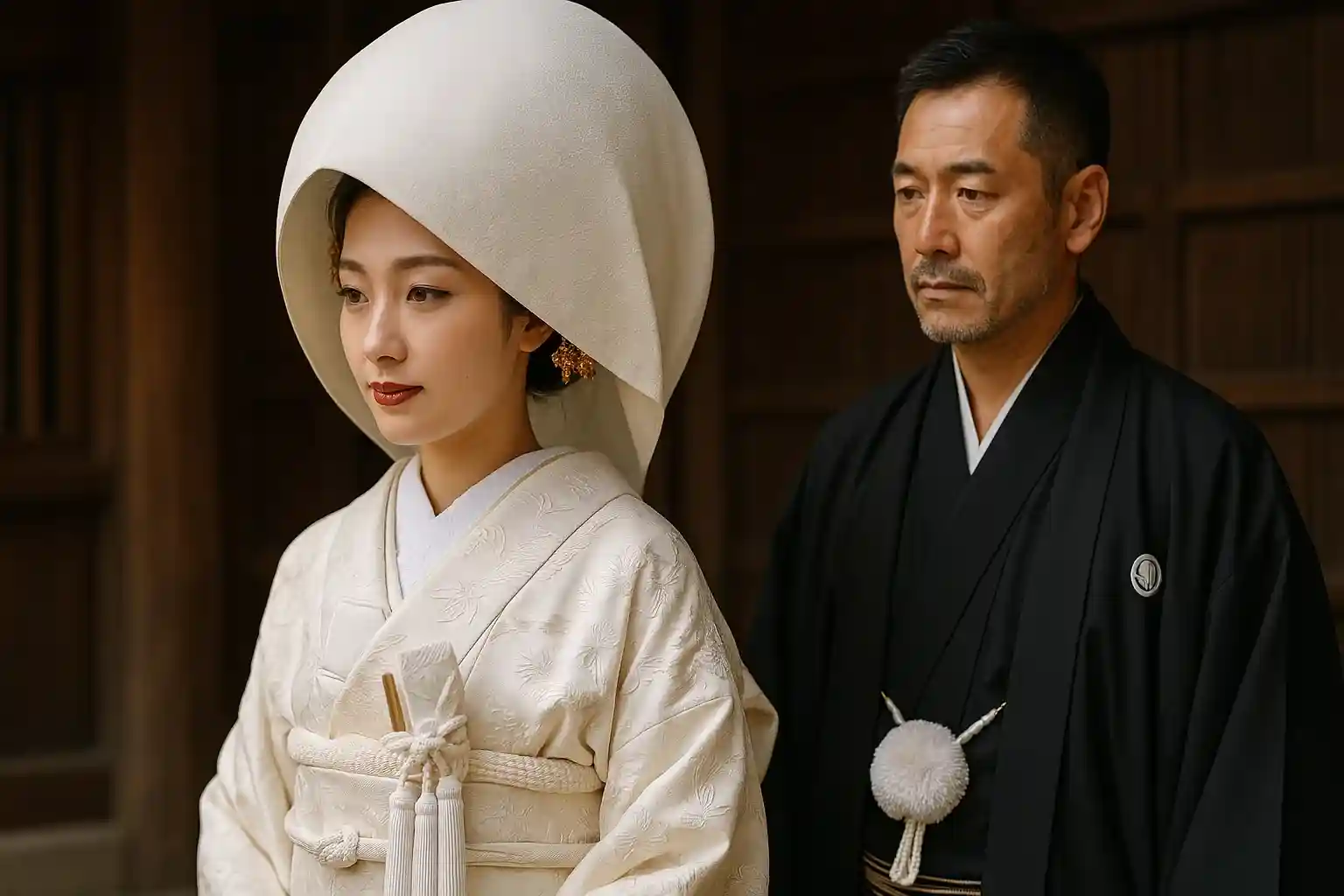Fashion is not just about trends and styles, it is more than just what we wear every day. Each piece of clothing means something special and also conveys a significant part of cultural heritage. Just as an app designed to track phone numbers helps us keep an eye on our actions and connections, clothing and fashion serve as a kind of “tracker” that captures key events, changes, and traditions in society. So today we would like to go deeper in some little-known traditions and customs that relate to clothing and style in different countries around the world. Here you may learn something about interesting practices where each outfit or accessory becomes more then item of appearance, but an important symbol that reflects cultural traits, social status, and traditions.
Japan: The Tradition of Wearing Kimono for Special Occasions
What is the first thing that comes to mind when you think of Japan? For many, it’s not rice and juice, but the iconic kimono. And you are right, this piece of clothing characterizes Japan more than ever, and wearing a kimono is a special skill that requires careful attention to detail and knowledge of the cultural context.
While Western clothing is worn daily, kimonos remain reserved for special occasions like weddings, tea ceremonies, and coming-of-age celebrations. The act of wearing a kimono is not merely about appearance, it is a ritual requiring skill and precision.
For example, one of the most significant varieties is the wedding kimono, called shiromuku or iro-uchikake, which is often embroidered with complex patterns symbolizing prosperity and happiness. The kimono is usually new, symbolizing the beginning of a new chapter in life. Moreover, the process of donning a kimono is so complicated that many people seek professional help from a kitsuke (kimono master) to ensure proper draping, tying of the obi (wide belt), and overall presentation.
By the way, the color of the kimono is not arbitrary. For example, young unmarried women traditionally wear bright kimonos of furisode color with long, drooping sleeves to demonstrate youth and readiness for marriage. And the way the obi is tied can indicate a person’s status – certain knots and patterns are reserved for married women or certain ceremonies. In Kyoto, geisha wear special kimonos that change according to the season: floral patterns in the spring and warm colors in the fall.

Kenya: Adornments for Coming of Age
Fashion in Kenya, especially among the Maasai people, is closely intertwined with identity and life stages. Among the Maasai, both men and women wear jewelry that symbolizes their journey from childhood to adulthood. These ornaments, mostly made of colorful beads, brass and shells, carry deep cultural meaning.
For example, for young Maasai warriors, the process of becoming an adult involves complex rites of passage. One of the most prominent symbols of becoming an adult is the wearing of intricate beaded necklaces and earrings. The colors used in beaded items are not random: each shade carries a specific message. For example:
- Red symbolizes bravery and strength, often worn by warriors.
- White represents purity and peace.
- Blue signifies the sky and God’s blessings.
And the larger and more elaborate a person’s jewelry, the higher their status within the community. Some Kenyan tribes use specific patterns in their beadwork that can indicate marital status, age group, or even social rank, for example, maasai tribal women often wear layered beaded necklaces that jingle as they walk, a special design to attract attention and showcase beauty.
Philippines: The Tradition of Wearing T-shirts with Images of Deceased Relatives
IIn many cultures, mourning is expressed through solemn ceremonies, black clothing or symbolic objects. In the Philippines, however, there is a unique and deeply personal tradition – to wear custom-printed T-shirts with images of deceased loved ones. These t-shirts people wear on death anniversaries, during funerals, or on special occasions to honor the deceased.
At first glance, this practice may seem unusual to strangers, but for Filipinos, it is a way to keep the memory of their loved ones alive. Unlike temporary rituals like lighting candles or offering flowers, wearing a T-shirt allows family members to carry a tangible reminder of lost relatives with them wherever they go. T-shirts often include the person’s name, birth and death dates, and a meaningful quote or prayer. These T-shirts are sometimes even given out to family members as mementos during funerals so that everyone has a remembrance of the departed.
Incidentally, this practice reflects the deep Filipino value of “utang na loob” (a deep sense of gratitude and devotion to family). And some families personalize their T-shirts even further by adding inscriptions like “In memory of…” or depicting angel wings and religious symbols. For many, this custom is not just a fashion choice, it is an emotional and cultural bridge between the living and the deceased to foster the strong family ties that define Philippine society.
South Korea: Masks as Fashion and Social Identity
Surprisingly, face masks in South Korea today are not just a means of protection, they have become an integral part of fashion and self-expression. Long before global health issues made them widespread, masks were already an integral part of urban life in South Korea. People used to wear them to protect themselves from air pollution, maintain privacy, and even make a statement about their style.
The flourishing of K-pop culture and street fashion further established masks as a fashion accessory. Today, they come in a variety of styles: minimalist black masks or high-end designer versions adorned with logos and patterns. Celebrities, influencers and fashionable youth often use masks to improve their image (sometimes combining them with outfits to create a distinctive look).
How masks reflect social and fashion trends in South Korea:
| Mask Type | Purpose and social meaning | Who wears them? |
| Black fashion mask | Stylish, sleek, often associated with celebrities and influencers | K-pop idols, young professionals |
| Designer mask | Luxury statement piece, sometimes featuring logos and embroidery | Fashion lovers, social elites |
| Pastel/patterned Mask | Expresses individuality, often worn to complement an outfit | Teenagers, university students |
| Medical-style mask | Traditional protection against pollution and illness, common in daily life | General public, older generations |
| Oversized/layered Mask | Used for added anonymity, especially by celebrities or introverts | Actors, musicians, private people |
Tip for visitors to South Korea: If you are traveling to South Korea, consider carrying a stylish mask (not only for protection but also to blend in with local fashion). Opt for a sleek black mask if you want to achieve a trendy, effortlessly cool look. Want to stand out? Go for pastel tones or a designer print to match your outfit!
India: The Culture of Dowry and Wedding Attire
In India, weddings are grand celebrations filled with deeply rooted traditions, one of which is the dowry system. Despite historical differences, this practice often involves the bride receiving a collection of saris, jewelry, and other articles of clothing from her family as part of the marriage. All these items symbolize prosperity, continuity, and the merging of the two families.
The sari, i.e. the traditional attire of Indian women, plays a key role in this tradition. The bride’s wedding sari is often red or gold, as these colors symbolize fertility, good fortune and prosperity. Depending on regional customs and the family’s wealth, the fabric may be silk, banarasi or embroidered georgette. In some communities, it is customary for the groom’s family to give the bride a garment to symbolize the bride’s acceptance into their home. In some regions, the number of saris gifted has a symbolic meaning – some communities give 11, 21 or even 101 saris as a sign of wealth and blessings.
Interesting facts about Indian wedding fashion: Gold jewelry makes up a large part of the wedding dowry and is often passed down from generation to generation as a family heirloom.

Fashion as a Cultural Language
Clothing is not just a way of expressing oneself, but a true chronicle of traditions, symbols and stories passed down from generation to generation. Just as a Number Tracker app helps you keep track of important contacts and whereabouts of your loved ones, cultural garments capture key moments in life, whether it be a wedding, an initiation into adulthood or a mourning ceremony. When traveling the world, it’s worth remembering that fashion is as much about beauty as it is about the language a culture speaks. And if you listen to carefully, you can learn more about it than meets the eye.



